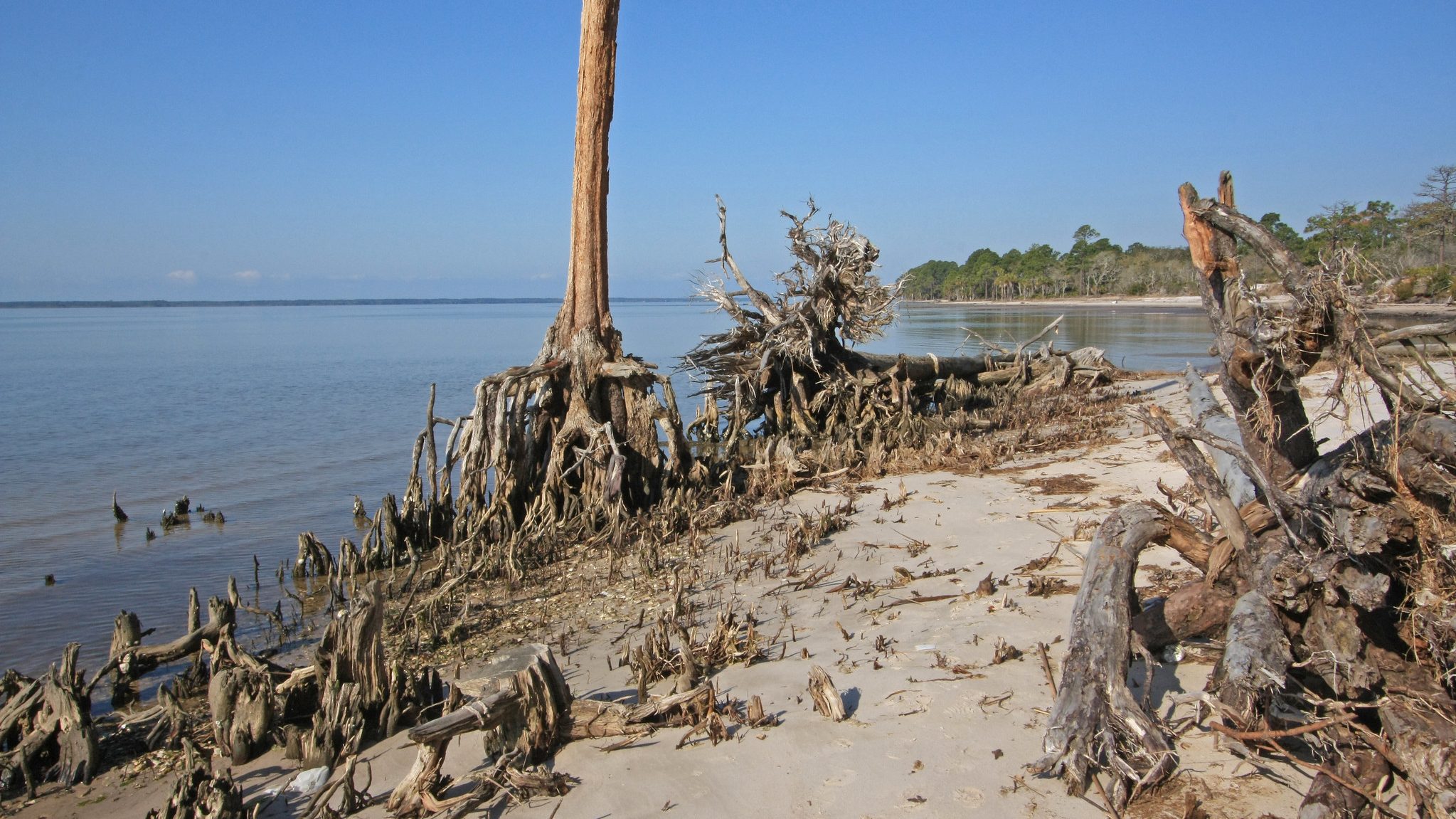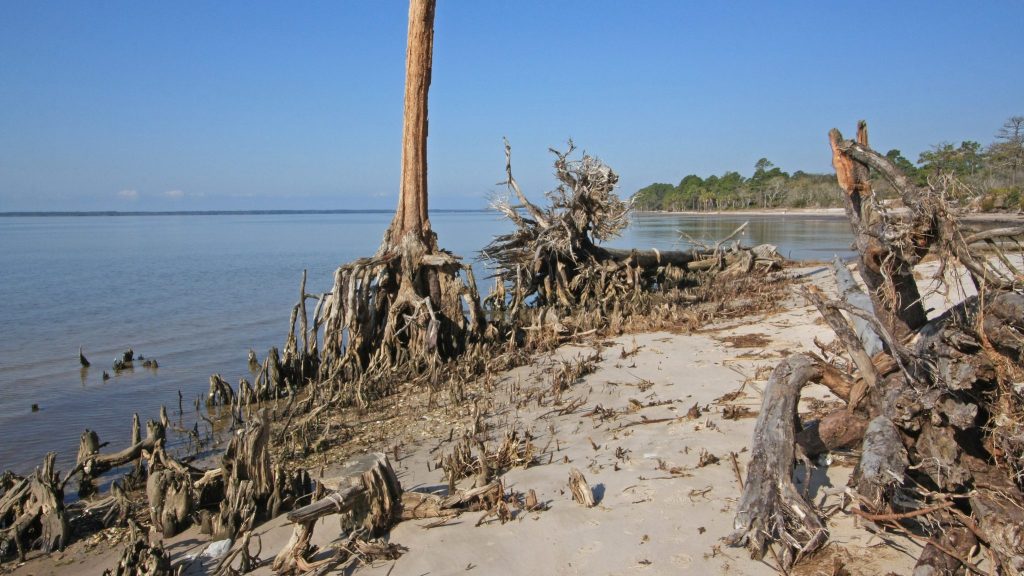Forest “Boneyards” Reflect Climate Challenges at Coastal Refuge

The following summarizes SE CASC project Climate Change Adaptation for Coastal National Wildlife Refuges. Content for this post was derived from a Sept. 11, 2019 article in E&E News by Chelsea Harvey. Link to the E&E News post here. View previous SE CASC post about this research.
 At Cape Romain National Wildlife Refuge in South Carolina, land is disappearing at a rate of 30 feet per year as rising sea levels erode the beach. This loss of ground plays out in the death of the trees of the maritime forest whose roots are anchored there. The result is what’s known as “boneyards,” areas populated by the skeletons of dead trees. The death of the maritime forest is one of several problems faced by the refuge as a result of rising seas, flooding, and erosion. Shrinking habitat for shorebirds and seabirds, some of which are threatened species, and loss of beach for sea turtle nesting sites add to the challenges for refuge managers faced with protecting the refuge and the many species it supports.
At Cape Romain National Wildlife Refuge in South Carolina, land is disappearing at a rate of 30 feet per year as rising sea levels erode the beach. This loss of ground plays out in the death of the trees of the maritime forest whose roots are anchored there. The result is what’s known as “boneyards,” areas populated by the skeletons of dead trees. The death of the maritime forest is one of several problems faced by the refuge as a result of rising seas, flooding, and erosion. Shrinking habitat for shorebirds and seabirds, some of which are threatened species, and loss of beach for sea turtle nesting sites add to the challenges for refuge managers faced with protecting the refuge and the many species it supports.
A recently completed project funded by the Southeast CASC, Climate Change Adaptation for Coastal National Wildlife Refuges, led by Mitchell Eaton, USGS Research Ecologist, was designed to help refuges on the east coast of the U.S. adapt to the difficulties caused by climate change. Investigators used Cape Romain NWR as a case study, with the goal to develop management and planning tools that can help other refuges address their own challenges.
In some ways, Cape Romain represents the perfect storm — a convergence of many of the individual issues that other coastal refuges are facing at their own sites. On top of its high rates of erosion, the refuge sits just outside the rapidly growing metropolitan area of Charleston where rampant coastal development makes the need for protected natural areas even more pressing. Shrinking staff and budget limitations at the refuge compound these problems.
“The conclusion … is that the refuge can’t do this on its own,” Eaton said.
The biggest takeaway from the project, which started in 2015, has been the need to engage other community partners in addressing the challenges facing wildlife refuges. Otherwise, tackling large-scale challenges like climate change and urbanization becomes a “David and Goliath” scenario, according to Eaton. As a result, the project emphasized partnerships with local stakeholders — conservation groups, landowners, other community organizations — who might be able to assist the refuge with its goals.
In some situations, that might mean working with local groups to develop more sustainable land-use practices in areas that affect the refuge or open a dialogue about certain effects of coastal development and find solutions. Or it could mean working with local partners to raise money for large-scale coastal restoration projects or to acquire land to add to shrinking refuge sites.
These are strategies that are likely to be applicable to refuge sites across the board, even if they’re not all dealing with the exact same problems, said David Case of D.J. Case & Associates, a consulting group specializing in conservation and public engagement, who worked on the project.
“Having to engage all of those audiences, particularly ones that the conservation community isn’t necessarily used to engaging, is a real challenge,” Case said. “But we know it’s the key to success.”
Although there are no immediate plans to continue the work at other sites, the research team expects that the lessons generated from the project will be more broadly applicable than just at this local scale, or at this one site. Results of the research are summarized in several upcoming publications.
- Categories:
